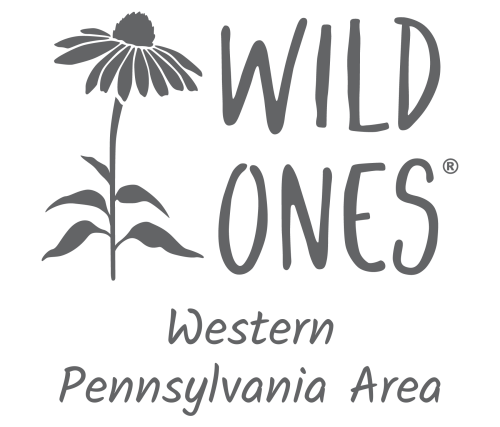Having waited until deadline day, I’ve written about the subject that I know best, although still only a little and much of it wrong- myself.
The first native plant thrill that I can remember was on Hog Mountain in South Central Virginia. My Aunt Dixie was an enthusiastic wildflower lover, and her “Holy Grail” was the yellow lady slipper orchid ( Cypripedium parviflorum) which was then less common than the lovely pink variety. I saw a flash of yellow along a woodland trail which was, you guessed it, wingstem- just kidding of course. She was blissful after running to see my chance discovery.
Many years later, in Pittsburgh, I went through a long journey, which we hope to make shorter for you, at 3 different houses. I began to appreciate the beauty and importance of native plant-based ecosystems. I was fooled by latin names that were shared by invasive Eurasian plants. I did not yet grasp that local ecotype species native plants are essential to nature, especially due to the great extent of evolutionary specificity. Even as I learned, I didn’t know where to buy them.
I took the Phipps Conservatory Natural Landcare Accreditation Course series, which I recommend to anyone who has the time and can pay the reasonable fee.
I had reached out to Wild Ones, but I didn’t do anything until Lisa Olsen at national introduced me to Tamara O’Brien, after which we immediately decided to co-found a chapter.
I formed a plan for a native garden in our small front space with professional help, but I went off script because of difficulty finding the right plants, impatience and arrogance. It is all out of proportion, but full of life, and I love it!
All this is to say that if I can help the cause of moving our society away from the “Great American Lawn” to better in every way mostly native plant gardens and environmentally friendly growing of healthy food, then anyone can.
It takes all of us with different skills and interests.
Since I’m a lousy gardener with a small space, I see the world as my garden and my roles in it as a connector and systems thinker.
We can’t succeed without:
- Those who yearn for gardening beneficially with mostly native plants.
- Scientists like Doug Tallamy to help us to understand a little more about nature and the integral parts that every species play in it.
3) Resources for learning including supportive groups like ours and educators.
4) Sources of seeds and plants.
5 Professionals who have the knowledge and enthusiasm to help people to design, plant and maintain more natural landscapes.
5) Folks in broader environmental, public health, social justice, and business communities who see the value of what we do and the need to commit more to it in “tried and true” and newer, innovative ways.
6) Policy makers at every level who help rather than hinder our causes.
7) People in media to highlight what we are doing and inspire others to join us.
While trying to separate what I am doing from official Wild Ones stances, I keep in mind the bold yet kind example of Lorrie Otto*. I am an activist against harmful practices including gasoline-powered lawn and garden equipment, numerous toxins including carcinogens, synthetic fertilizer overuse, use of massive amounts of potable water and sale of invasive plants.
I advocate for government funding to educate our citizens and otherwise facilitate and sometimes mandate more natural gardening.
We need many, many more people to help us and themselves in a wide variety of ways!
Although our chapter has gone far, with wonderful leaders and other members, there is still so much to do and fun to be had doing it until mostly natural landcare becomes the norm rather than the exception.
Thanks, everybody!
Ed Wrenn, MD
* https://www.nwf.org/en/Magazines/National-Wildlife/1996/American-Heroes-Lorrie-Otto
